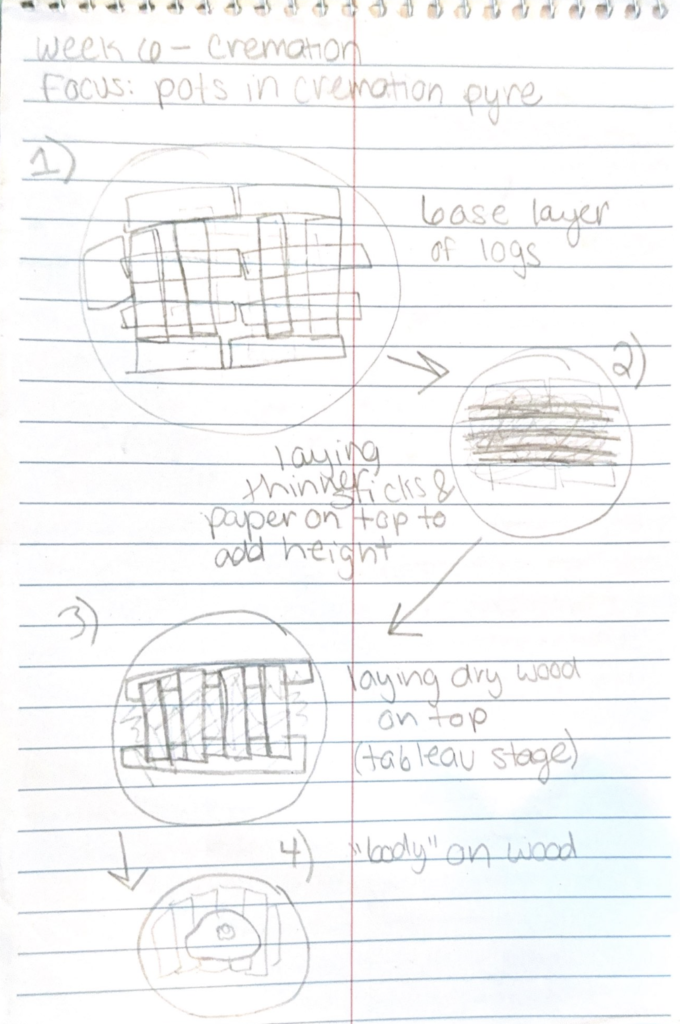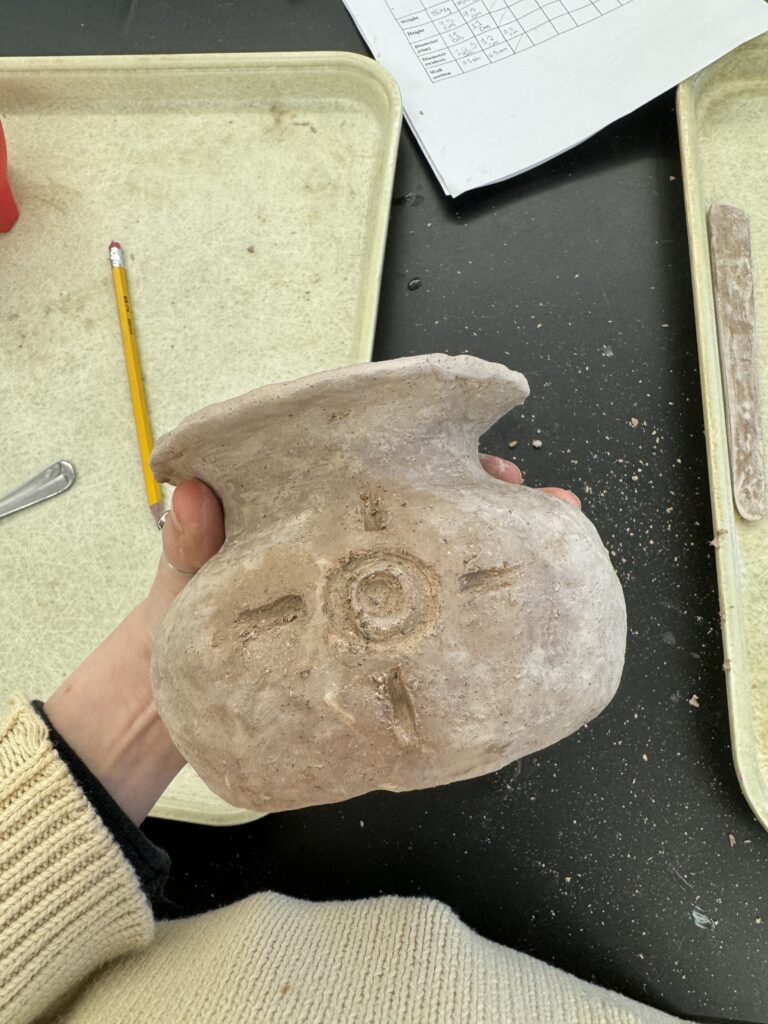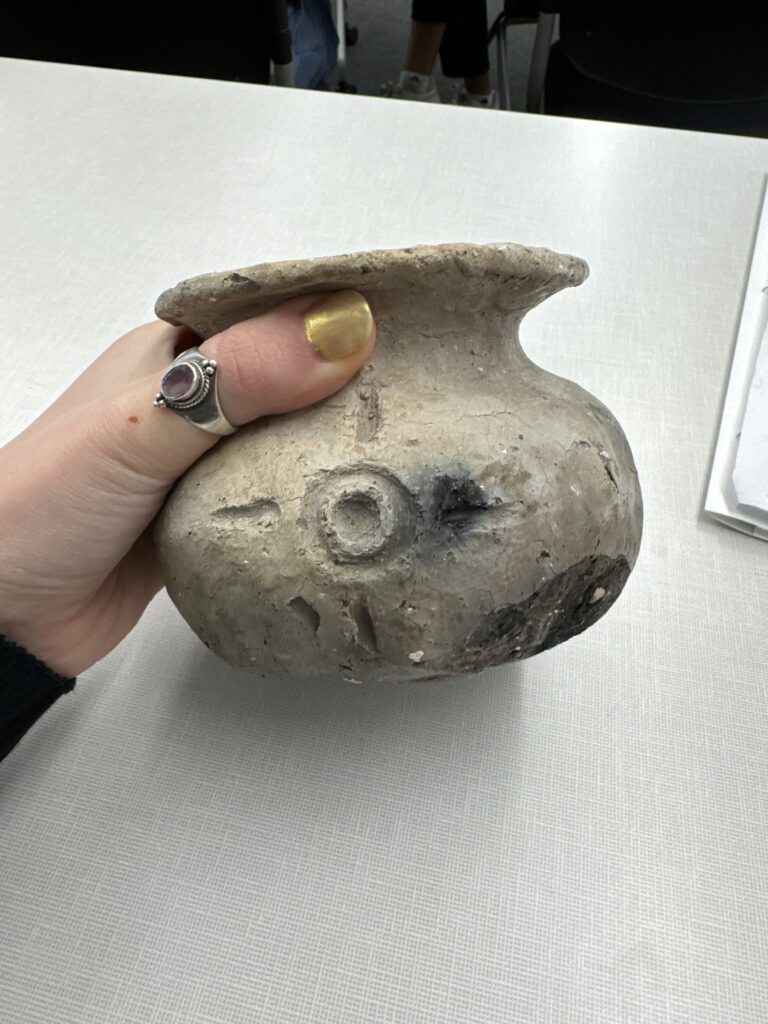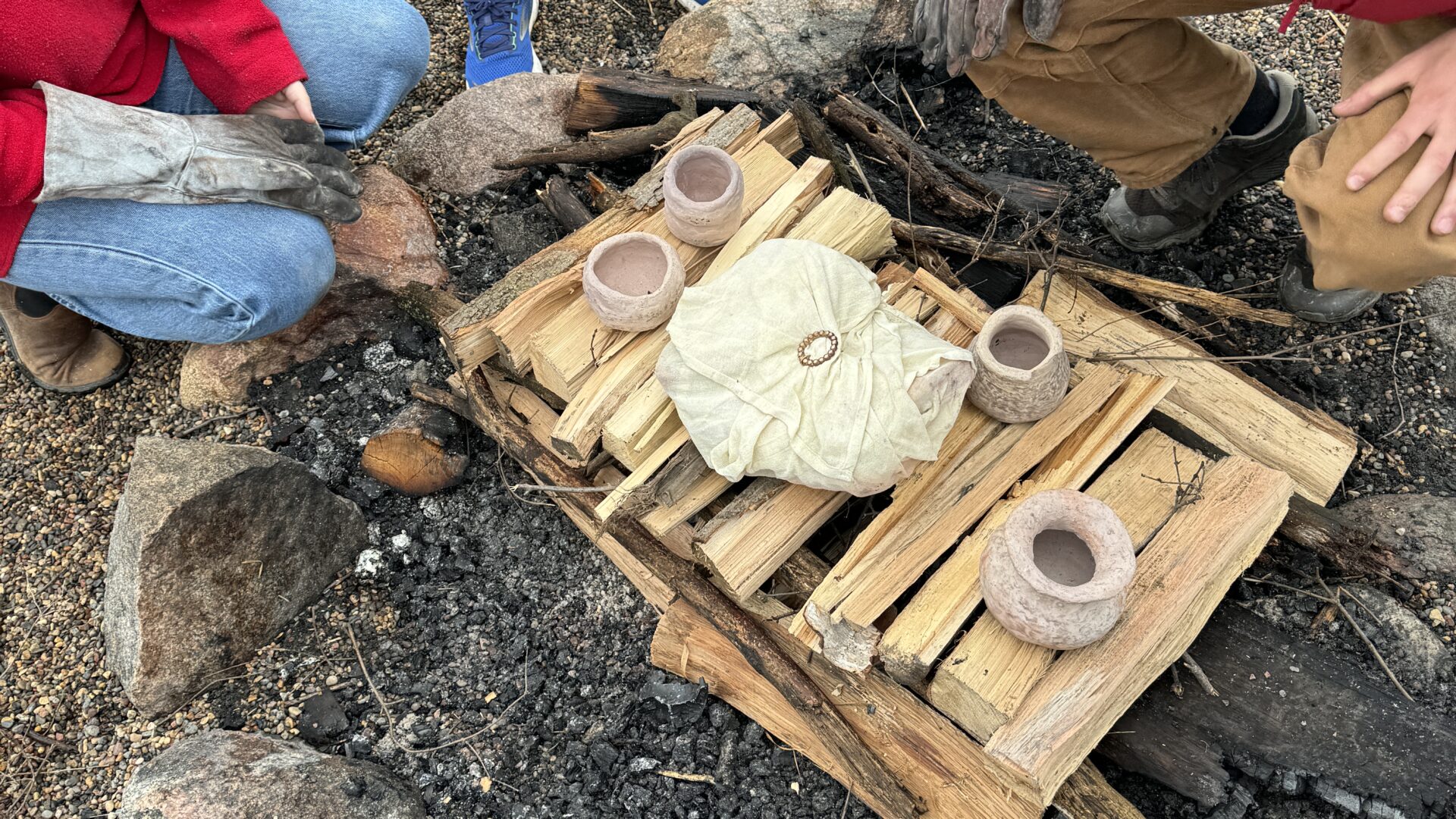During this week’s cremation lab, Group D’s focus was on firing our pots in the actual funeral pyre! Before diving into the quantitative data which I collected throughout this process, I will include some (rudimentary) illustrations I made of the pyre’s composition, displaying the step-by-step process of how we built it and how we positioned our pots within it.

Throughout the lab, I specifically focused on my pot, so as to minimize potential confounders by controlling for the shape, position, and composition of the pot I was collecting data on. Below is a picture of my pot before firing, followed by a picture of it taken midway through the firing process, as it was turning black (though it mysteriously turned grey again later).



In terms of the actual data I was able to collect during the firing process, I mainly focused on the temperature of my pot in the fire (to the extent that the temperature gun was able to reach it and give an accurate reading) and on making qualitative observations on the sensory experience as a whole. Below is a table in which I compile all my data, both quantitative and qualitative, organized by the time at which I recorded it.
| Time (24 hour clock) | Temperature of Pot (˚C) | Observations |
| 14:20 | placed my pot on the ground by one of two secondary fire pits | |
| 14:30 | placed pot inside of fire pit, periodically turning | |
| 14:35 | 160 | |
| 14:45 | 195 | looks like a “golden smore” |
| 14:58 | 230 | taking pot out of fire pit now, to be transferred to pyre |
| 15:02 | 76 | pots cooled dramatically in the time they were out of the fire |
| 15:08 | pyre lit | |
| 15:14 | 29 | |
| 15:30 | fire is raging and about 500˚ C – pretty scary actually | |
| 15:35 | 719 | my pot is completely black |
| 15:40 | 811 | potential spalding, but largely intact |
| 15:47 | 760 | now grey in color, except for the two spald parts which remain black |
| 16:24 | 621 | survived! but looking a bit worse for wear |
After the fire died down and we collected our pots, it became clear that the increased oxygen that the pots being fired on the pyre itself caused them to take on a much lighter color than the pots which were fired in a fire pit. However, given that there were no explosions, I would characterize both the efforts of my group and the class as a whole as very successful!



0 thoughts on “Group D Cremation Lab Data Report”